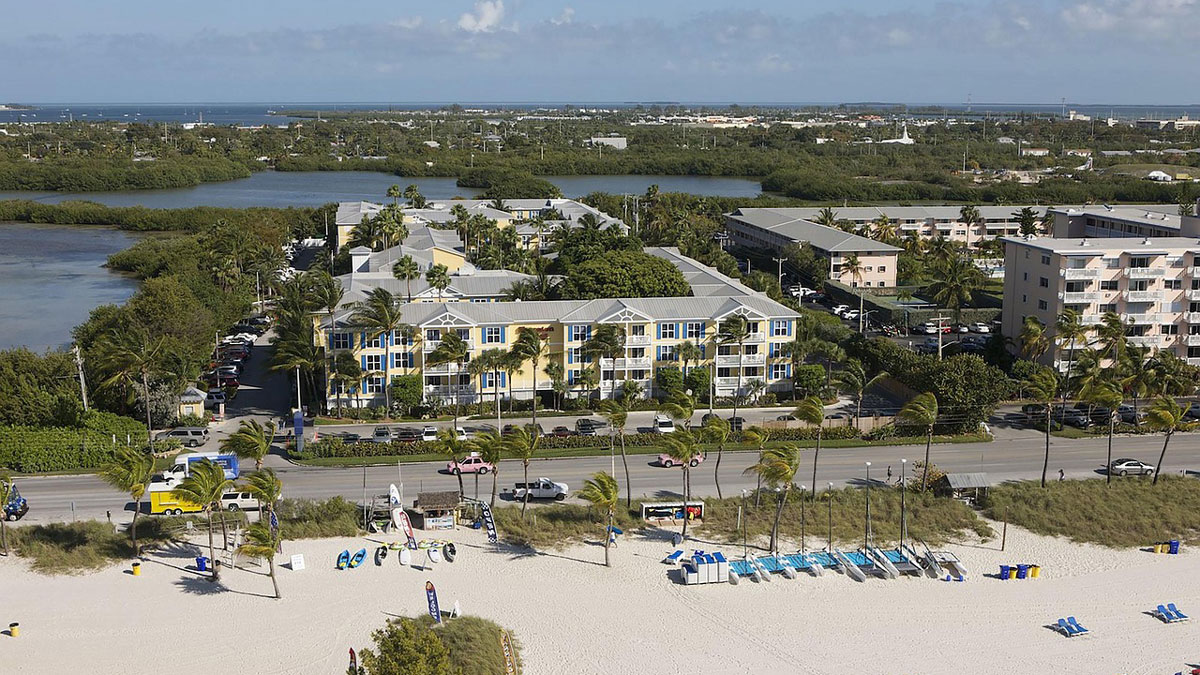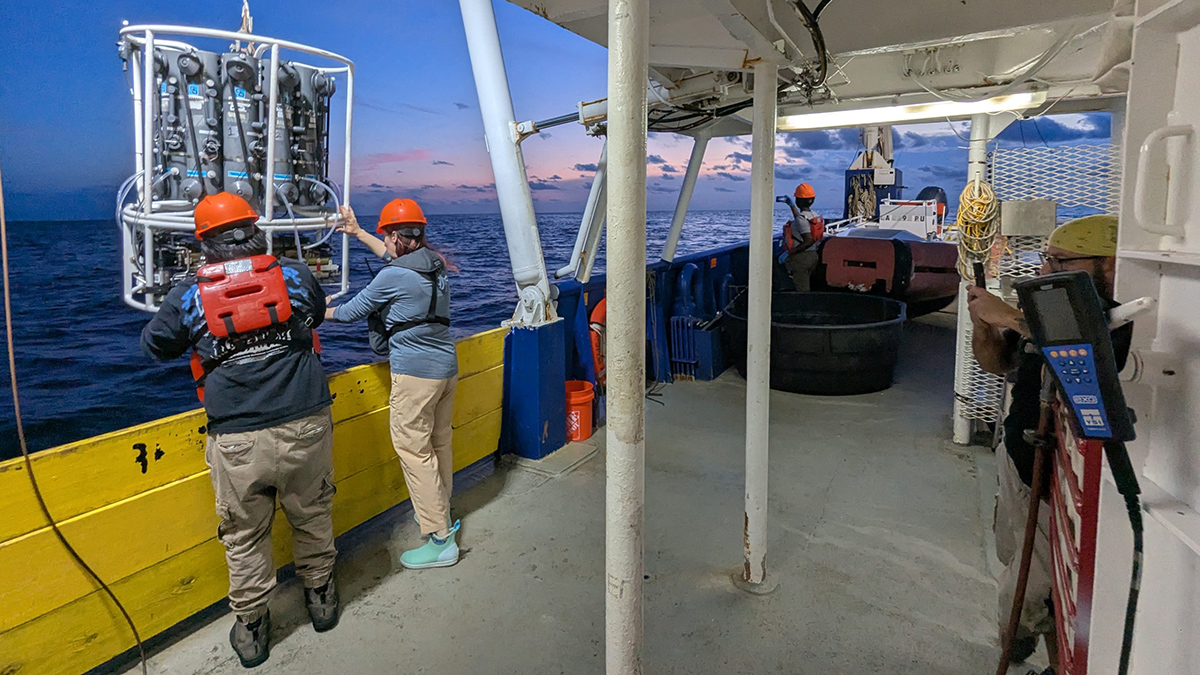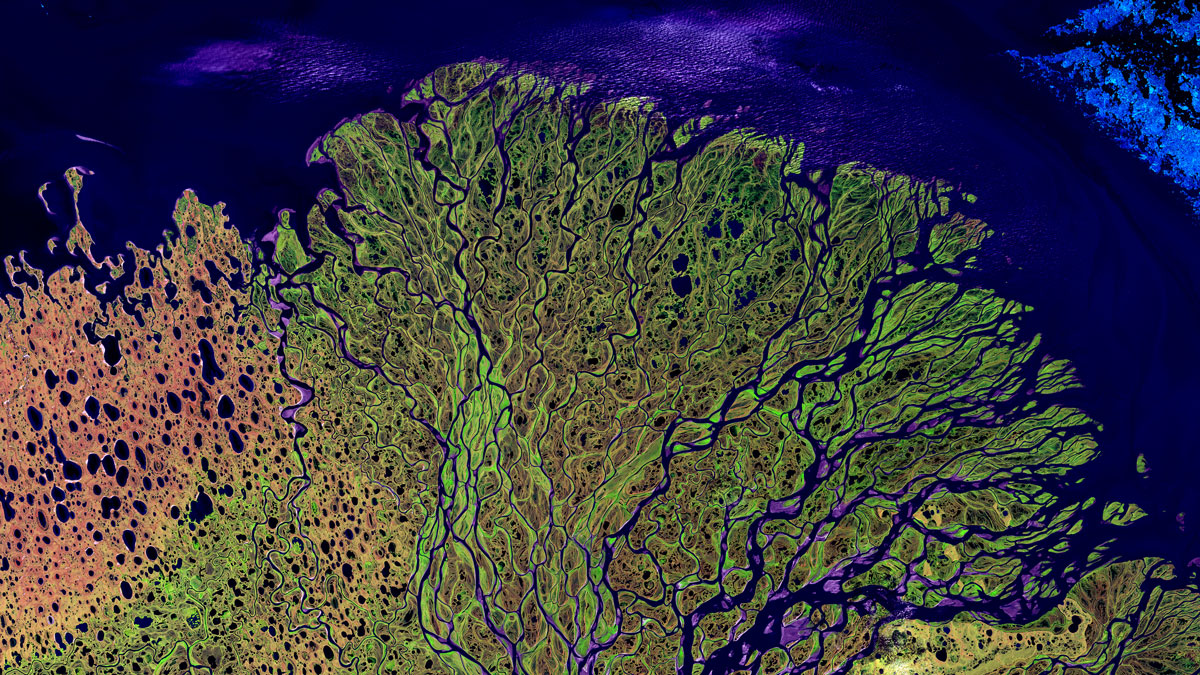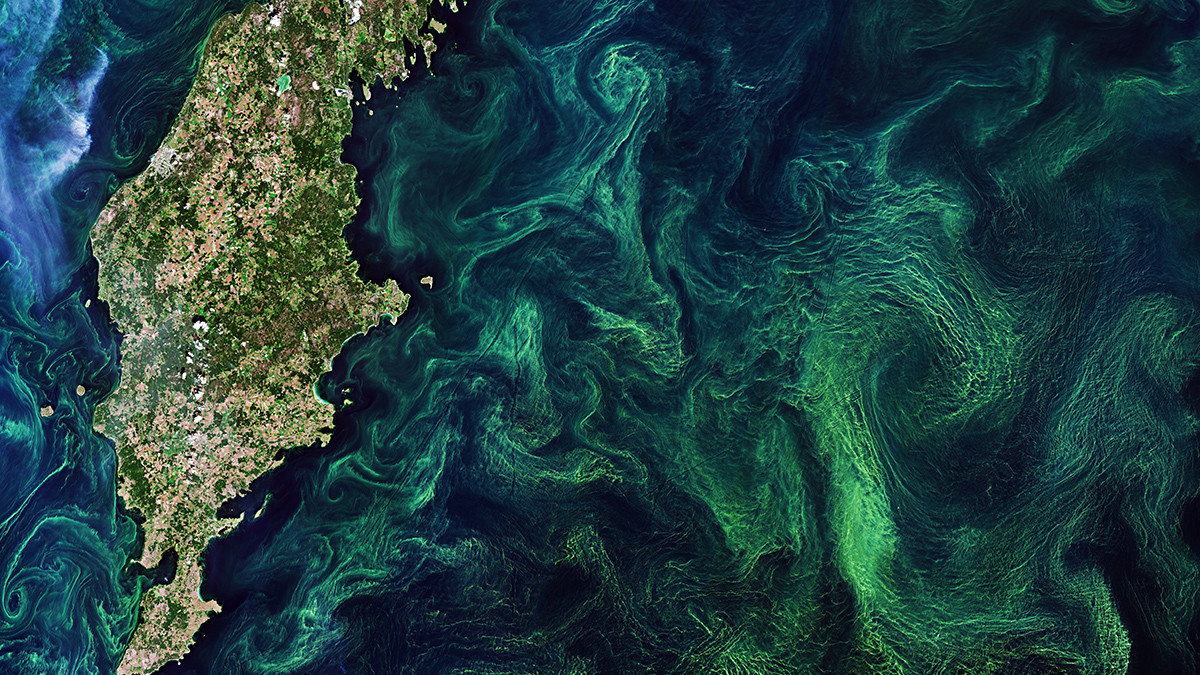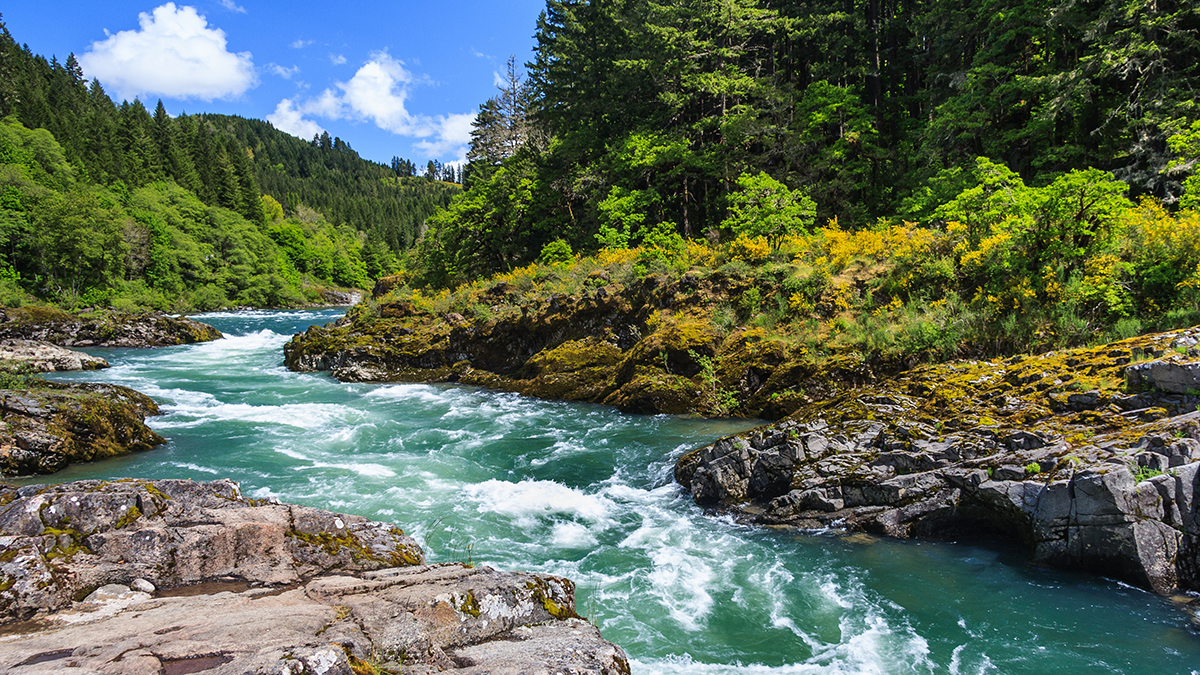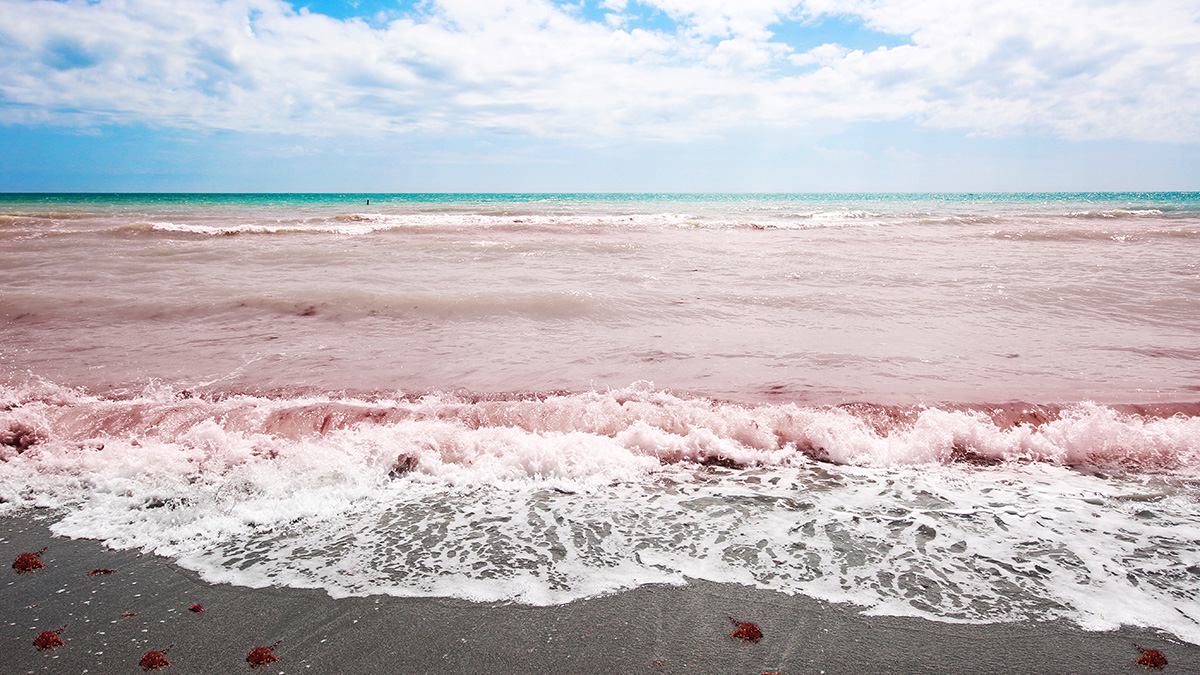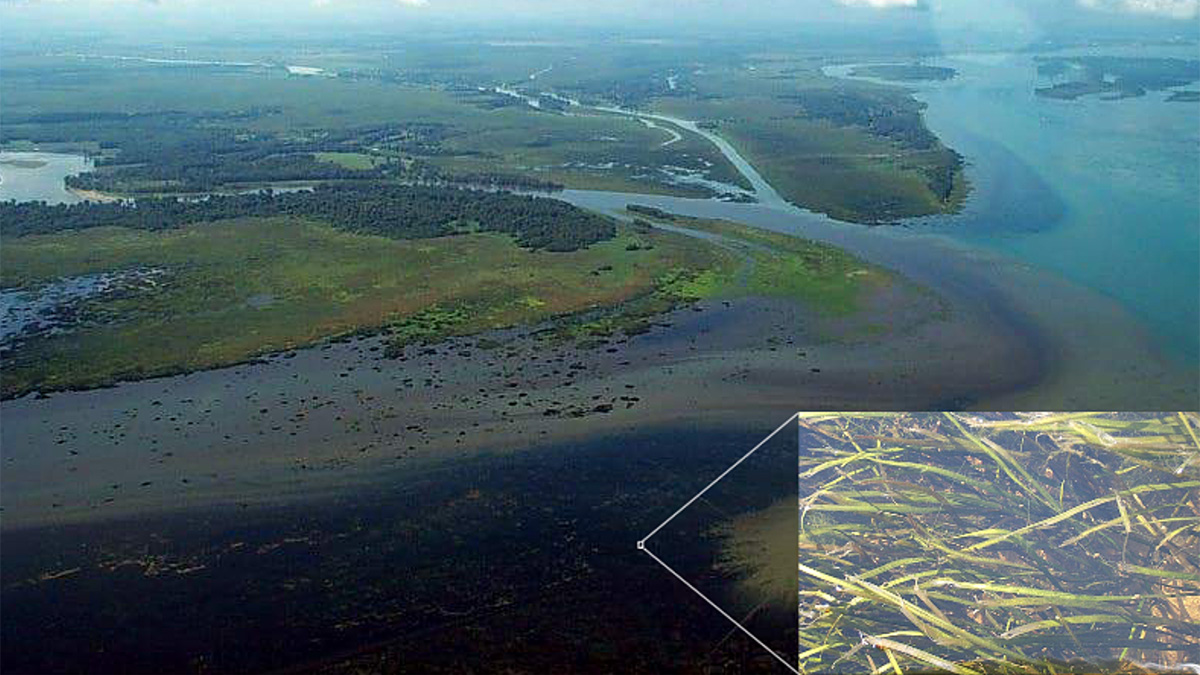Injection of wastewater into shallow wells is meant to filter nutrients like nitrogen and phosphorus out of the wastewater. But a new study suggests that nutrients aren’t entirely eliminated—and may be polluting coastal waters.
harmful algal blooms
Cruise to Measure Gulf Dead Zone Faces Stormy Funding Future
Funding cuts are affecting The Pelican’s annual hypoxia cruise to investigate the environmental conditions off the coast of Louisiana.
Arctic Rivers Trade Inorganic Nitrogen for Organic
Climate change is shifting the makeup of a key nutrient in rivers across Russia, Alaska, and Canada, with the potential for ecosystem-wide impacts.
Could Bubbling Oxygen Revitalize Dying Coastal Seas?
Reoxygenation approaches have shown some success in lakes, but their potential risks must be examined carefully before they’re implemented as solutions to improve the health of coastal waters.
As the River Flows the Colors Sparkle
Diving into the science behind river color and its relationship with flow.
OneHealth, Climate Change, and Infectious Microbes
AGU and ASM welcome submissions to a joint special collection focusing on the impacts of climate change and microbes on human well-being.
Florecimientos de algas nocivas: nada bueno, solo lo malo y lo feo
Diversos factores humanos y naturales están generando florecimientos de algas nocivas cada vez más frecuentes y prolongados. Estudios recientes han comenzado a revelar la magnitud del problema y nos informan sobre soluciones potenciales.
Analyzing Sources of Pollution in the Great Lakes
Understanding how agriculture and land use affect nutrient flows and concentrations in the vast area of the Great Lakes is an essential step to developing sustainable management strategies.
High-Frequency Monitoring Reveals Riverine Nitrogen Removal
Years of daily readings provide an unprecedented view into how a submerged aquatic meadow kept nitrogen from reaching the St. Lawrence Estuary as well as insights on how climate change may alter it.
Harmful Algal Blooms: No Good, Just the Bad and the Ugly
Natural and human factors are leading to larger, more frequent, and longer-lasting algae blooms. Recent research is increasingly revealing the scope of the problem and informing potential responses.

